





Greetings,
Agriculture is a constantly evolving industry. Farmers, ranchers, and agribusiness owners must be intentional and embrace strategic planning to help make their way through a changing landscape. I want to explore why having a written strategic plan is essential.
Before delving into the reasons for having a plan, let’s first define strategic planning. Strategic planning is the process of defining an organization’s direction and making decisions on allocating its resources toward achieving its long-term objectives. A well-defined strategic
plan can provide focus for farming operations and agribusinesses to achieve their goals. Please note, a strategic plan is not a business plan. Think of your business plan as a roadmap of how day-to-day operations will be run over the next 1-3 years, while your strategic plan focuses on your ability to achieve a desired long-term outcome.
One of the main reasons to conduct regular strategic planning exercises is to ensure the farm business is always moving in the right direction. Success will look different for everyone, but a good plan will stretch your current abilities and challenge you to keep improving. Think of this process as your chance to imagine the future.
Strategic plans should not just exist in your mind; they should be placed in written form, whether on paper or as a digital file. A written plan is essential as it is a constant reminder of the goals and objectives set by the farming operation. Having your plan in a readily available location can help share ideas and visions with other stakeholders, such as family members, business partners, and employees, who can help achieve these goals.
Creating the plan is not the end of the process; an annual review and deep reassessment every few years is a great practice in the rapidly changing agricultural environment. Shifts in technology, global events, political/regulatory policy, and consumer/marketplace preferences are but a few of the
many considerations that need to be contemplated when designing and updating your strategic plan.
Lastly, we understand the importance of having a strategic plan and the work that goes into putting one together. AgCountry’s current plan focuses on enhancing the success of our patrons. We are in the process of making updates to our strategic roadmap to ensure we remain customer-centric and focused on continually transforming your cooperative to create lasting value and opportunity for you.
Strategic planning is essential for businesses to remain competitive and achieve long-term success. Remember, be intentional and embrace regular planning exercises. If you need an outside resource, our team at AgCountry has a wealth of agriculture and financial knowledge to counsel you as you craft your plan. This process should involve developing a comprehensive strategic plan, ensuring it’s easily accessible, and performing periodic reviews. Don’t wait to start planning; take the first steps today toward achieving your farm business’ objectives.
Sincerely,
Marc Knisely, President & CEO 701-499-2559Marc.Knisely@AgCountry.com





Whether that means automating payments or using remote check capture, you can trust our Online Services are secure and can be used whenever or wherever it works for you.

Learn more by contacting Online Services: 855-402-7849 | OnlineServices@AgCountry.com Recurring




Today, we maintain 22 ethanol lending relationships— seven as the lead lender and 15 participations—resulting in 56 ethanol plants. Our current ethanol portfolio consists of commitments exceeding $360 million.
When it comes to output, the projects we finance produce over 4.2 billion gallons of ethanol per year. When compared to an industry capacity of approximately 17.7 billion gallons, AgCountry finances roughly a quarter of all ethanol production capacity in the United States.
Ethanol is not the only renewable fuel in AgCountry’s portfolio. We are also active in the growing renewable diesel industry, maintaining four lending relationships with a peak commitment of $148.9 million. Renewable diesel is a growing industry with numerous projects in various stages of planning and development.
Constructing a new plant to produce renewable energy requires a lot of resources. Based on our experience, some ethanol projects can cost anywhere between $30 to $100 million or more. When it comes to renewable diesel, the estimated cost can reach as much as $400 million or more per project.
Growing environmental concerns of climate change and our carbon footprint have led to a focus on renewable energy. Agriculture and renewable fuels play an important role in reducing greenhouse emissions. The team at AgCountry Farm Credit Services is playing an important role in these sectors by providing financing to renewable fuel industries like biofuel (ethanol) and renewable diesel.
AgCountry made its first ethanol loan in 2002 with an $18.4 million AgCountry-led loan for a Greenfield construction project along with six other lenders. This plant was the beginning of a long history of AgCountry supporting the renewable energy industry.
With such a large financial commitment, it takes multiple lenders, investors, and others to make it happen. We proudly work with other Farm Credit associations, commercial banks, and equity investors to provide the financing necessary while managing the financial risk among many institutions.
There are currently no new ethanol plants under construction. Many ethanol plants are considering innovative technologies to increase efficiencies and reduce their carbon footprint. It is estimated that there are over 18 renewable diesel plants under construction or in various stages of development at the time of this writing.
Ethanol is a renewable biofuel that is typically made from corn or sorghum. Approximately 98% of gasoline
sold in the U.S. is blended with 10% ethanol, which burns cleaner and cooler than oil. Many gas stations are beginning to offer a 15% blend, called E15 or unleaded 88, giving drivers a lower-cost option at the pumps. As
expected to grow to 35 billion gallons by 2050. Both ethanol and renewable diesel have a pathway to be used in SAF. This massive change in the airline and energy industry leaves significant opportunities for renewable fuels. The expected growth in renewable fuels is being driven by several factors that include:
1. The Renewable Fuel Standard (RFS) adding additional mandates for biofuels.
2. The Inflation Reduction Act (IRA) expanding funding opportunities with various tax credits.
3. Increased commitments by private and public entities to move toward zero emissions. The federal goal is to cut U.S. greenhouse gas emissions in half by 2030 and be net zero by 2050.
a price saving to consumers, E15 runs 10 cents less per gallon on average than E10. All vehicles 2001 or newer are E15 approved by the Environmental Protection Agency (EPA). This represents nine out of ten cars on the road today.
Soybean oil ranks third behind animal fats and corn oil for the lowest carbon intensity score as a feedstock for diesel blends. The renewable diesel industry is currently producing around 1 billion gallons per year. However, construction has started on retrofitting existing refineries to produce over 3 billion gallons per year, and announcements have been made to build up to 5 billion gallons per year. Renewable diesel is a drop-in fuel, which can replace diesel made from fossil fuels with no blending required like biodiesel.
The popularity of renewable fuels is just beginning to take off. With a focus on carbon reduction, airlines are planning significant reductions by 2030 with a goal of being carbon neutral by 2050. The Sustainable Aviation Fuel (SAF) market today is 15 million gallons and is
As more governments focus on environmental issues, additional rules and regulations are being created. On the state level, California and Oregon have mandated reductions in greenhouse gas emissions from the transportation sector. These low carbon fuel standard (LCFS) frameworks set annual carbon intensity (CI) standards, which reduce over time for gasoline, diesel, and the fuels that replace them.
To calculate the CI of greenhouse gas emissions associated with renewable fuels, all steps of production, transporting, and consuming a fuel, known as the complete life cycle of that fuel, need to be considered. The financial value of achieving a lower CI rating can be significant. With the value of credits continuing to increase, more ethanol producers are likely to explore shipping their products to California and other states, which have implemented LCFS frameworks.
One key to the success of both ethanol and renewable diesel depends on future legislation and regulation. As the federal government continues to find ways to grow this part of the agricultural economy, AgCountry firmly believes policies rooted in voluntary, science,
and incentive-based principles will spur growth in the agriculture industry and renewable fuels space.
The financial support of AgCountry and the Farm Credit System is vital in making significant strides toward a sustainable future. Reducing carbon emissions and support for renewable fuels are goals that can be achieved with the help of partnerships among agriculture industries, financial institutions, and other key players in the industry. AgCountry has been a proven leader in collaborations with other lenders in providing the necessary financing to make these projects possible. While our lawmakers grapple with policies to accommodate an evolving market landscape, there are still ways each one of us can make an impact on the renewable fuel industry today, such as choosing to fill up at the pump using ethanol-blended fuel or renewable diesel.





 Written by: Megan Huether, Insurance Specialist
Written by: Megan Huether, Insurance Specialist
Strategies to mitigate risk is at the forefront of agriculture operations. Weather, disease, and market prices impact the bottom line. Farmers and ranchers who raise livestock have long sought ways to protect their investments from unexpected losses due to uncontrollable factors. One of the most reliable forms of protection is the Livestock Risk Protection Insurance Plan (LRP).
LRP is designed to cover against declines in market price for fed cattle, feeder cattle, and swine. It’s offered in every county of every state, meaning that no matter where your operation is located, you are eligible for coverage. You may apply for a policy throughout the crop year starting September 1 with coverage attaching upon buying a Specific Coverage Endorsement. These endorsements specify the number of head to be insured, the number of weeks until sale, and type/size of livestock. Once approved by the Risk Management Agency (RMA), coverage begins immediately.
The LRP plan provides protection against sudden drops in market price. When you sign up for an LRP policy, you select a coverage price ranging from 70-100% of your expected ending value based on RMA’s recommendation. If the actual ending value is below your chosen coverage price at the end of the period, an indemnity will be paid for the difference between those two values. The indemnity amount depends on how far below your
Like any program, there are some limitations to keep in mind. First, you must own the livestock you’re looking to insure. If you turn in a claim, you will be asked to provide proof of ownership. If you sell animals prior to 60 days before your endorsement ends, your coverage will become void if you don’t transfer the ownership of the policy. It is important to note that LRP does not cover any death loss.
If any livestock die, you need to report it to the insurance company within 72 hours.
There are a few other insurance options for those that raise livestock. If you already utilize Livestock Gross Margin (LGM) insurance on your animals, you will not be able to take out an LRP policy due to both options protecting against the market price. It is possible to have an LGM and LRP policy if they are insuring separate groups of animals.
As a fellow livestock raiser, LRP is an attractive option in today’s market. Cattle prices have increased recently along with input costs. Setting a price floor with LRP provides protection to help cover your investment. As we have seen in the past few years, the world can be unpredictable.
An LRP policy can also provide flexibility. One of the great aspects of this option is that you don’t have to insure your whole herd. You could get coverage for one or more animals. If you’re raising feeder cattle or fed cattle, you can insure up to 12,000 head per endorsement or 25,000 head annually. If you’re a pork producer, you can insure 70,000 head of swine per endorsement with an annual cap of 750,000 animals.
Another benefit of LRP is that you can insure any unborn livestock that you own. Special endorsements exist that allow you to lock in a market price based on an approximate date you would sell the unborn animal(s).
July 15
It is worth mentioning that you can choose how far out you want to lock in the price. For swine, you can insure 13 to 30 weeks from when you plan to sell. On the cattle side, the range increases from 13 to 52 weeks.

Finally, premium payments are deferred and with an LRP policy, you will not have to pay the premium until a month after the endorsement expires. That means if there is a claim, the premium can be taken out of the indemnity.
LRP provides farmers and ranchers with peace of mind that they won’t suffer major financial losses due to unexpected changes in market prices or other factors beyond their control. With its availability in every state and county in America, it’s never been easier to get covered. Whether you’re a seasoned rancher or just starting out as a young farmer looking to protect your investment, the LRP plan might be right for you. Contact your local AgCountry office to learn more.
Acreage Reporting
Sales Closing - Annual Forage
July 31
Sales Closing - Forage Seeding
September 30
Margin Protection
Grass Seed
Cultivated Wild Rice
Forage Production (AYP & APH)
Rye Wheat (MT, SD, WI)
Do you remember the last time you stopped to consider your succession plan? For many farmers and ranchers, it can feel like a tedious task that is not necessarily top of mind. With rising costs and valuations, revisiting your plan and making necessary updates will keep it current. Let’s look at some of the common elements and considerations of a succession and retirement plan.
Farming and ranching often involve multiple people. Business agreements between parties come in different forms, and we tend to see buy-sell or stock-purchase agreements. With today’s elevated price environment, now is a good time to review such agreements. Questions to lead your review could include:
- Are buyouts still viable given today’s values?
- Do buyouts work with expansion plans for new land, machinery, or bin/site improvements?
- What happens if there is an untimely death, disability, divorce, or departure/retirement?
- Are there buyouts for non-farming parties, and can your operation cash flow for your successor?
It is important to keep in mind what you have agreed
upon. Remember, make sure everything is in writing. This will help ensure your wishes get carried out and the farm or ranch stays together.
Regardless of whether talking about a buyout between business partners or terms and conditions for the estate plan, with high prices for most agriculture assets today, look at the following documents to see if the buyouts you have are still viable:

- Wills and revocable trusts (the estate plan)
- Buy-sell agreements for partnerships, LLCs, and corporations
- Operating agreements where assets are coowned between related and non-related parties
- Options and rights of refusal for land and other farm assets between siblings or business partners
- Legal arrangements you have entered into that offer others a right to buy or rent something
Farmers and ranchers often have a significant amount of their assets tied up in their operations. This is true for many customers. Wills or trusts should be designed around whether there is a successor or not. If no successor exists, it can be as simple as each child
receiving an equal share of the estate, or the parents deciding who gets which assets. When a successor does exist, we need to discuss the parent’s will or trust successfully transferring their business. For example, any buyouts that a successor may need to execute, whether mandated or optional, with a non-farming sibling, must cash flow.
Most of the parents we work with who have successors state they want to ensure their successors have a good chance to succeed. However, success does not mean everything is free from parents or just handed over. There are times, though, when we may need to do this to successfully transition the operation.
Everything starts with the will or trust. From there, we have the fair vs. equal talk and discuss what, if any, buyouts will be included in the will or trust where a successor buys out non-farming siblings. Again, the goal is to keep the operation together. Paying out today’s high land and machinery values in the form of a buyout can be a major roadblock. An agreement that looked good five to ten years ago may not work today.
To see where you stand, start by running your balance sheet through your will or trust. Does a buyout cash flow? Be sure to use current market value numbers for all assets. Having a balance sheet with low land values is fine while actively farming for credit and lending purposes; however, when you die, we need to use current market values to see how the will or trust performs.
Wills and trusts are not static documents. Estate planning is not a “one-and-done” process. These documents need to be looked at every three to five years with a successor or five to seven with no successor. Keep in mind document performance is based on the value of your estate. You should review your will or trust when:
- Tax and estate planning laws change
- You receive an inheritance
- There is a change in farming status by either you or a successor
- There is a death of a spouse and/or marital status change
- Circumstances with children change
- You move to another state
Conversations between farm and ranch business owners and their spouses or children can be difficult when an agreement is not entered into about how to price a buyout if someone dies, becomes disabled, wants to split up or retire, or if any owner divorces. It is best to have something in place before any of these events occur. If your situation is anything other than a married couple farming together and you farm or ranch with someone in a formal business entity or coown assets, think about a formal written agreement to determine what happens to the ownership interest in the entity or the co-owned assets.
As with a will or trust, run the entity’s balance sheet through the buy-sell or operating agreement and see if the buyout still works. Again, be sure to use current market value numbers in all circumstances. Look at any agreement you have every three to five years to see if the buyouts in place still cash flow. Like wills and trusts, look at your business entity documents now to avoid trying to work out the details if something happens later.
Perfection does not exist with a business, estate, or succession plan. There are good plans that result in good outcomes. Consistent reviews help keep the plan viable. We hope you take some time to see how the documents you have for your estate plan or your business entity (or both) unfold. Talk to trusted professionals who work in this area. Don’t be afraid to ask hard questions about where your plan is going. Know how the documents you have spent good money on will work by using current numbers. This will help you understand how things will unfold if an unforeseen event happens or if that time comes to move on and exit farming or ranching.
ADVOCATING FOR YOU:
Members of Congress continue the work of crafting the next farm bill. With the current bill set to expire on September 30, the House and Senate Agriculture committees have been holding frequent informational hearings. Individual members are hosting listening sessions in their districts, working on legislative proposals, and submitting ideas to the committees for possible inclusion in the final bill.
However, no legislative text of a comprehensive bill exists nor has any announcement about a framework of an agreement by legislative leaders been released. While this may sound concerning, those familiar with how farm bills are developed and how Congress operates would say the process is playing out as expected.
Several issues have prevented farm bill writers from making rapid progress on the legislation. The first issue was recently settled as part of the debt limit deal that was reached in early June. Debt limit negotiators chose to include reforms to the Supplemental Nutrition Assistance Program (SNAP), specifically work requirements related to program eligibility, which should allow farm bill writers to move forward with that issue having been settled outside of the Agriculture committees.
A second issue that remains unsettled is whether the Agriculture committees will get additional funding from Congressional and Budget Committee leaders. Tackling issues that many farm organizations have called for, such as increasing reference prices under Price Loss Coverage (PLC) and adding support for higher levels of crop insurance coverage, will be very difficult without additional budget resources.
Congress continues to work in earnest to complete the next farm bill. From the Agriculture Committee chairs and ranking members to House and Senate leadership, to President Biden, all have said they want to get the bill done. In fact, the committee leaders met privately with President Biden and Secretary of Agriculture Tom Vilsack in May to discuss the bill. Of course, that doesn’t guarantee the bill will be completed by September 30. Recent history shows that farm bills are challenged to be finished on time. In fact, the last time a farm bill was completed without the use of an extension was in 1990.
The Farm Credit System is working with Congress to enact a farm bill that maintains a strong farm safety
net for producers, including a strong federal crop insurance program.
Additionally, Farm Credit encourages Congress to support rural communities and agriculture by:
- Increasing the loan limits on Farm Service Agency Direct and Guaranteed Loan programs to better reflect the increasing costs of purchasing land and operating farms and ranches.
- Strengthening rural water systems by ensuring that Systems’ existing water lending activities are available in communities eligible to receive USDA-guaranteed water loans.
- Promoting U.S. ag exports by increasing the amount of export financing Farm Credit System Funding Banks are allowed to provide.
- Boosting development of vital rural community facilities (hospitals, rural clinics, skilled nursing facilities, etc.) by clarifying Farm Credit institutions’ authority to invest in rural community facilities projects and encouraging partnerships on these projects with community banks.
- Expanding access for rural businesses to equity capital investment by eliminating unnecessary restrictions on Rural Business Investment Companies (RBIC) and allowing RBICs to access federal leverage funding, like how small business investment companies operate.
We will continue to monitor developments and work with other agriculture organizations in a unified manner to engage with Congress, using the power of our cooperative’s 25,000 members to amplify the voice of agriculture and rural communities.
AgCountry advocacy efforts extend to state policy and the work of the legislative bodies in Minnesota, North Dakota, and Wisconsin. Here are a few significant agriculture items coming from the state capitols in our territory.
The new Fiscal Year 2024-2025 agriculture funding includes:
- $10 million to start a grain indemnity fund, which would offer farmers protection in the event of an elevator bankruptcy. Farmers will pay premiums when the fund dips below $8 million unless they choose to opt out of the program.
- $4 million to reestablish the Dairy Assistance, Investment, Relief Initiative (DAIRI) program, which will provide grants to small and mid-sized dairies for enrolling in federal risk protection.
- $750,000 to expand the biofuels infrastructure grant program.
- $300,000 for additional staff at the Rural Finance Authority, the state’s main agricultural lending agency.
The comprehensive tax bill includes:
- An extension of the Beginning Farmer Tax Credit and an expansion to allow family members of beginning farmers access to the program.
- Increasing the first-tier property valuation exclusion for agriculture homesteads limit from $2.15 to $3.5 million to reflect increasing land values.
- The corporate farm law was updated. Changes are intended to encourage more animal agriculture, specifically feeding and dairy, by allowing corporations of 10 members or less to own up to 160 acres for animal facilities.
- A new grant program was created to assist counties and regional councils in strategic planning and accommodating investments in livestock production. It will be administered by the Ag Department.
- Individuals from foreign countries, except Canada, will be prohibited from purchasing ag land in North Dakota. There are exceptions for purchases up to 160 acres for research, testing, and development.
- The tax bill eliminated income tax for married couples making less than $74,750 and lowered the other tax rates to 1.95% for married couples between $74,750 and $275,100 and 2.5% for all others earning more than that. The current highest rate is 2.9%.
The Joint Committee on Finance recently completed its work on the Department of Agriculture, Trade, and Consumer Protection (DATCP) budget. The language will be sent to both the Assembly and Senate for further consideration. The aim is to have a budget completed by June 30. The Joint Committee on Finance approved the following in the DATCP budget:
- $1 million annually for the Wisconsin Initiative for Agricultural Exports.
- $1 million annually for the Producer-Led Watershed Protection Grant Program.
- $1 million annually for the Nitrogen Optimization Grant Program.
- $800,000 annually for the Cover Crop Insurance Premium Rebate Program.
July Baraboo, WI
18-20
Morgan, MN
August
1-3
With a theme of “Full Steam Ahead,” Farm Technology Days 2023 is being hosted at the Badger Steam & Gas Engine Club’s grounds near Baraboo, Wisconsin. This large, outdoor farm show will feature the latest technology and vendors of all kinds. Tickets are just $10, and parking is free. This three-day show runs from 9 am to 4 pm each day.
West Fargo, ND
Sept.
12-14
The largest farm show in Minnesota is back and bringing together the best in agribusiness from around the state and beyond. At the show, you can network, learn, and grow by taking in educational opportunities or meeting with over 500 exhibitors. Farmfest 2023 will feature political forums, live broadcasts, a presentation of the Woman Farmer of the Year and Farm Family of the Year awards, plus an entertainment tent for you to relax and take in live music.
With over 900 exhibit booths, along with training sessions, demonstrations, and countless opportunities to connect with your peers, there is little doubt that Big Iron is an event for agribusiness. The upper Midwest’s largest farm show is back at the Red River Valley Fairgrounds in West Fargo, North Dakota. Admission is free.
June is National Dairy Month and we’re excited to celebrate all month long! Stop into your local AgCountry office anytime during the month of June and enjoy an ice cream treat on us as a small thank you for being a valued AgCountry customer.

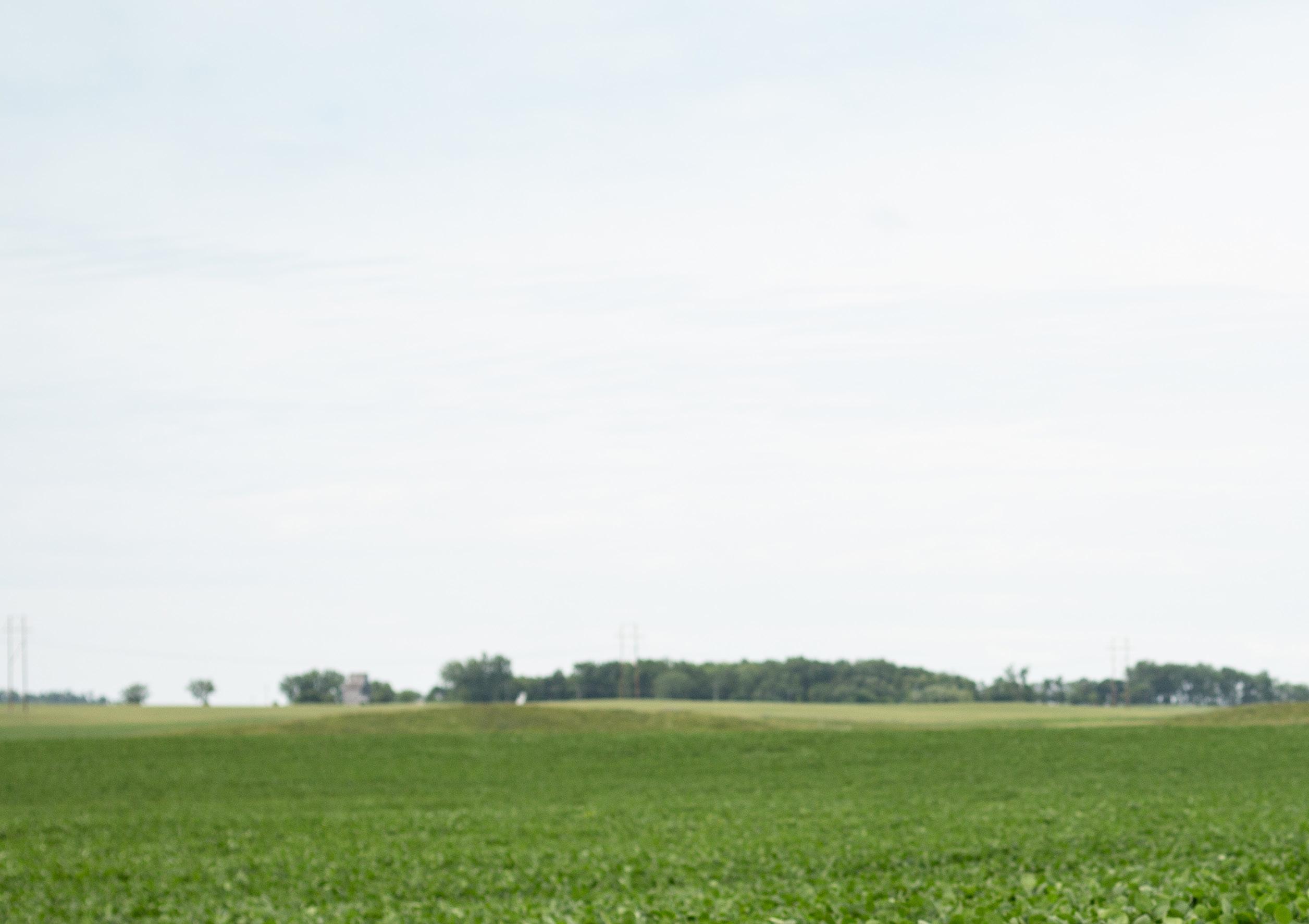


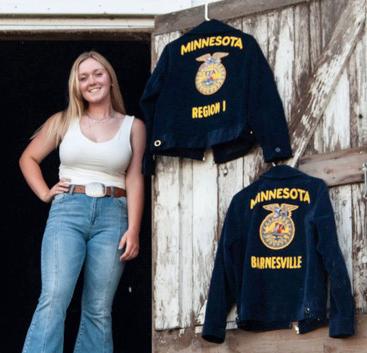














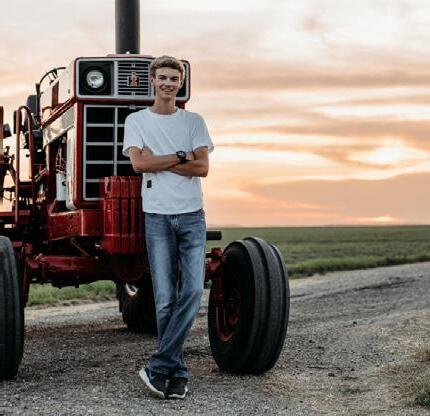












 Alison Leonard Merrill, WI
Easton Eriksmoen Crosby, ND
Jacob Eckert Medford, WI
Anna Funk Crookston, MN
Elizabeth Reinart Neillsville, WI
Jule Stenson Crosby, ND
Bailey Linzmaier Marshfield, WI
Gabrielle Joos Hancock, MN
Annaliese Rauschenberger Minot, ND
Emily Fannik Max, ND
Kaitlyn Geiser New York Mills, MN
Brett Baumgarten Kindred, ND
Gracie Syversen Edgeley, ND
Annamarie Aue Auburndale, WI
Emma Gullicks Galesburg, ND
Katelyn Wittnebel Nassau, MN
Christian Thomas Greenwood, WI
Gretchen Larson Hines, MN
Austin Wittman
KayLea Berg Barnesville, MN
Drew Stieglitz Greenwood, WI
Isabel Schmidt Medina, ND
Alison Leonard Merrill, WI
Easton Eriksmoen Crosby, ND
Jacob Eckert Medford, WI
Anna Funk Crookston, MN
Elizabeth Reinart Neillsville, WI
Jule Stenson Crosby, ND
Bailey Linzmaier Marshfield, WI
Gabrielle Joos Hancock, MN
Annaliese Rauschenberger Minot, ND
Emily Fannik Max, ND
Kaitlyn Geiser New York Mills, MN
Brett Baumgarten Kindred, ND
Gracie Syversen Edgeley, ND
Annamarie Aue Auburndale, WI
Emma Gullicks Galesburg, ND
Katelyn Wittnebel Nassau, MN
Christian Thomas Greenwood, WI
Gretchen Larson Hines, MN
Austin Wittman
KayLea Berg Barnesville, MN
Drew Stieglitz Greenwood, WI
Isabel Schmidt Medina, ND
Congratulations to the 2023 High School Scholarship Winners. 50 high school seniors were chosen to receive a $1,000 AgCountry scholarship. The scholarship will be awarded upon proof of enrollment in college in the fall of 2023. Award notification letters were mailed to the recipients on April 15, 2023. Here is a complete list of the 2023 winners.



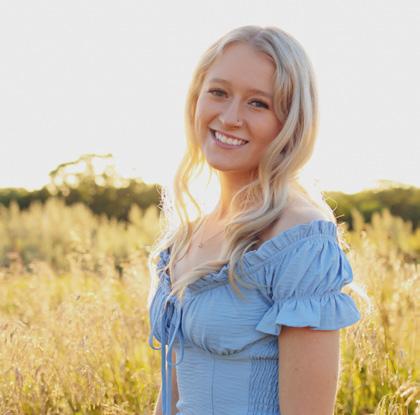

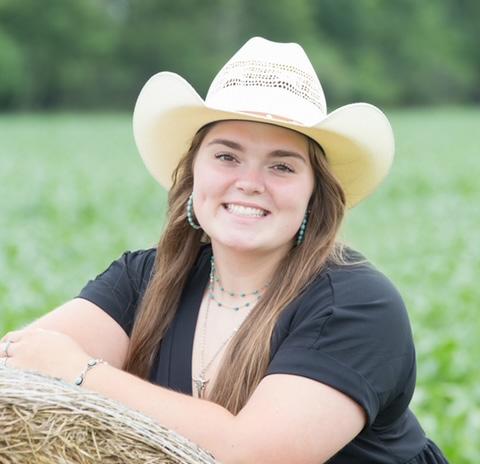


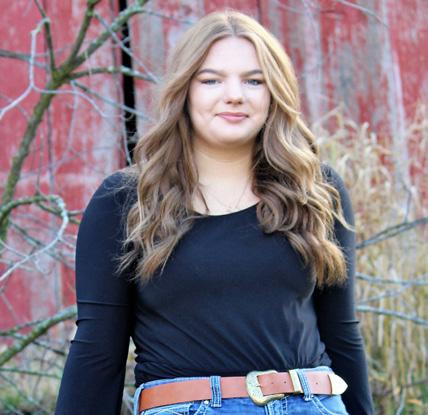



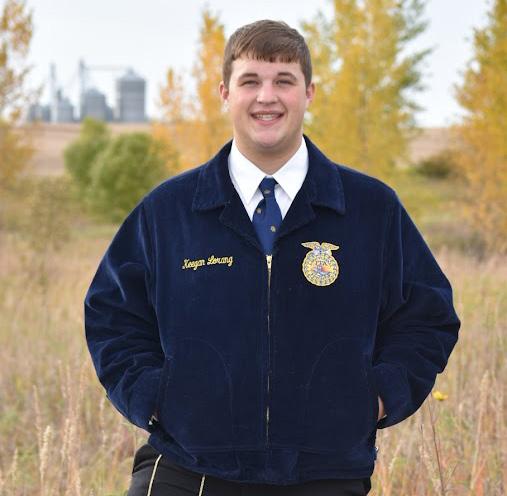
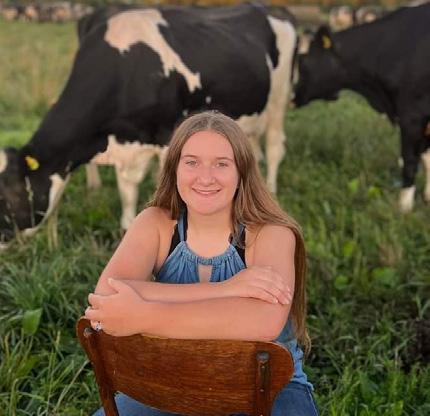










 Olivia Throener Cogswell, ND
Owen Zikmund Pisek, ND
Kaylee Rinehart Willard, WI
Sydney Jacobson Hatton, ND
Lexi Gloege Bellingham, MN
Olivia Nitschke Jud, ND
Tyson Odermann Parshall, ND
Lucas Prange Wisconsin Rapids, WI
Preston Kraft Velva, ND
Micah Thompson Perham, MN
Teagan Olson Forbes, ND
Madisyn Altendorf Minto, ND
Rachel Boehlke Thorp, WI
Kendalyn Dahlke Edgar, WI
Zachariah Zikmund Park River, ND
Thea Mattson Lake Park, MN
Matthew Weber Lake Benton, MN
Sierra Bakke Unity, WI
Landon Koenig Portland, ND
Nathan Nikolay Auburndale, WI
Trina Bores Wisconsin Rapids, WI
Olivia Throener Cogswell, ND
Owen Zikmund Pisek, ND
Kaylee Rinehart Willard, WI
Sydney Jacobson Hatton, ND
Lexi Gloege Bellingham, MN
Olivia Nitschke Jud, ND
Tyson Odermann Parshall, ND
Lucas Prange Wisconsin Rapids, WI
Preston Kraft Velva, ND
Micah Thompson Perham, MN
Teagan Olson Forbes, ND
Madisyn Altendorf Minto, ND
Rachel Boehlke Thorp, WI
Kendalyn Dahlke Edgar, WI
Zachariah Zikmund Park River, ND
Thea Mattson Lake Park, MN
Matthew Weber Lake Benton, MN
Sierra Bakke Unity, WI
Landon Koenig Portland, ND
Nathan Nikolay Auburndale, WI
Trina Bores Wisconsin Rapids, WI
AgCountry Farm Credit Services
P.O. Box 6020
Fargo, ND 58108
Do you have a photo that captures the essence of agriculture or rural life? Be sure to enter it into AgCountry’s photo contest for a chance to win a $500, $350, or $200 prize and be featured in our 2024 calendar! Photos will be accepted until September 1, 2023. Each participant is allowed to submit up to three photos.
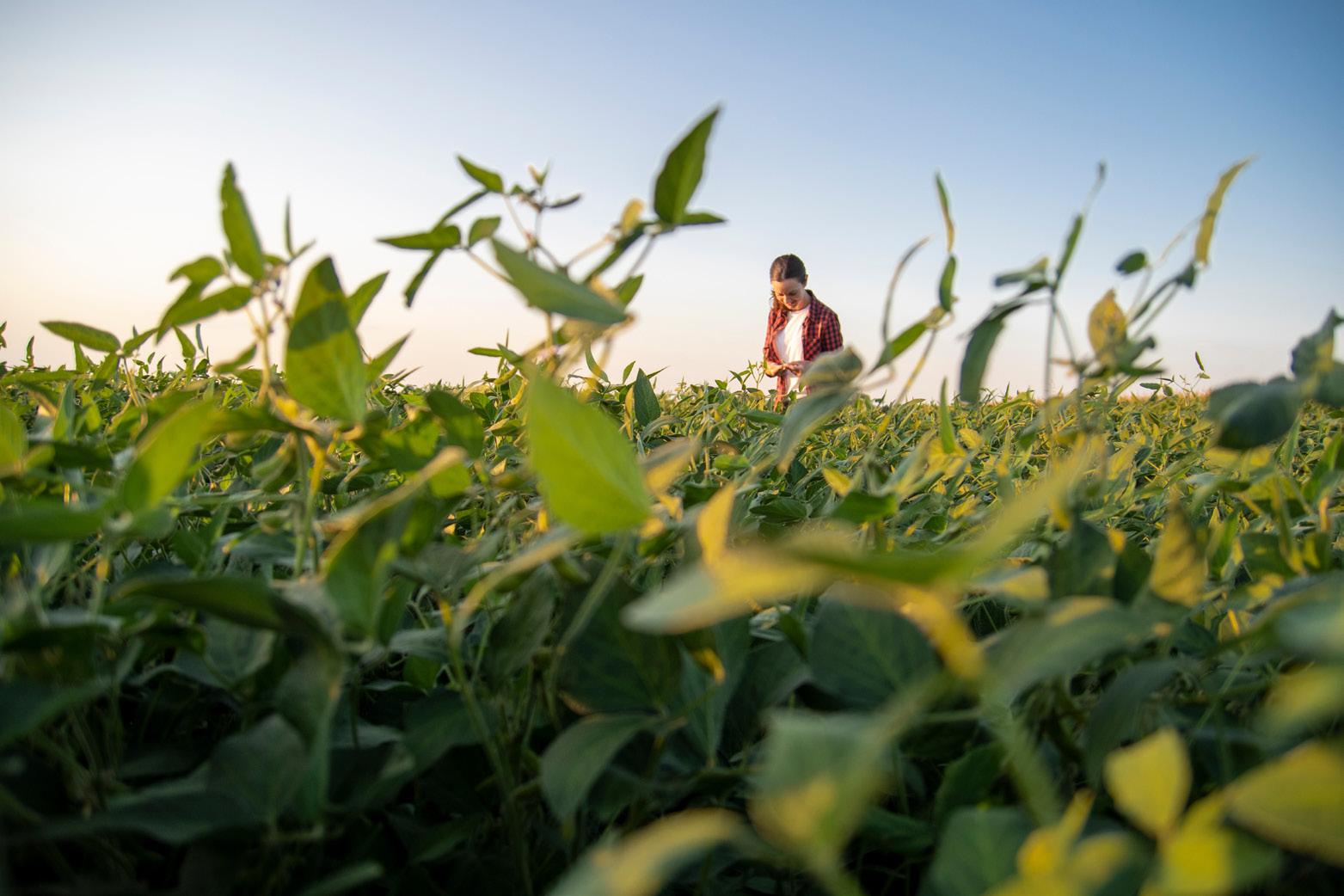
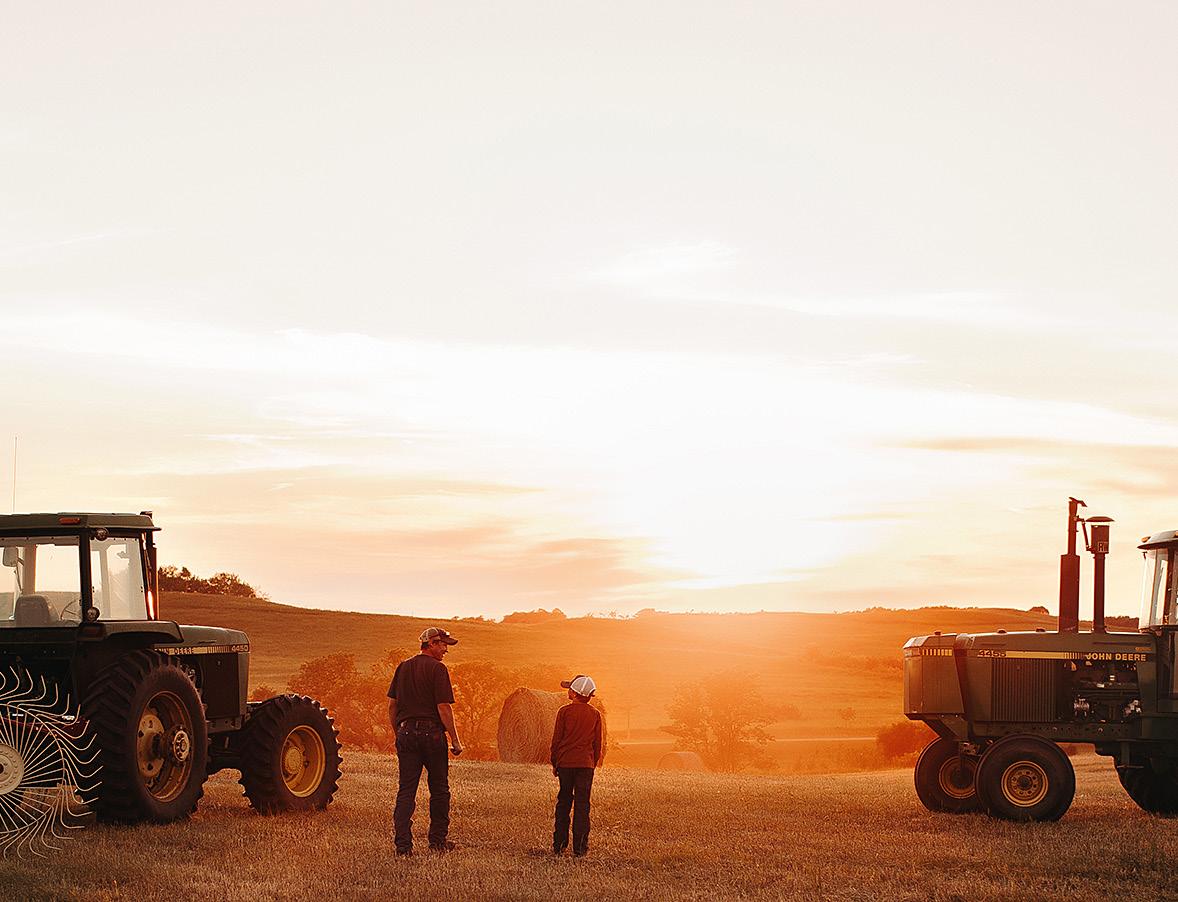
Photos can be submitted at: AgCountryPhotos.com
First Place: Second Place: Third Place:
$500 $350 $200
Contact your local AgCountry offıce to get started. AgCountry.com/Locations